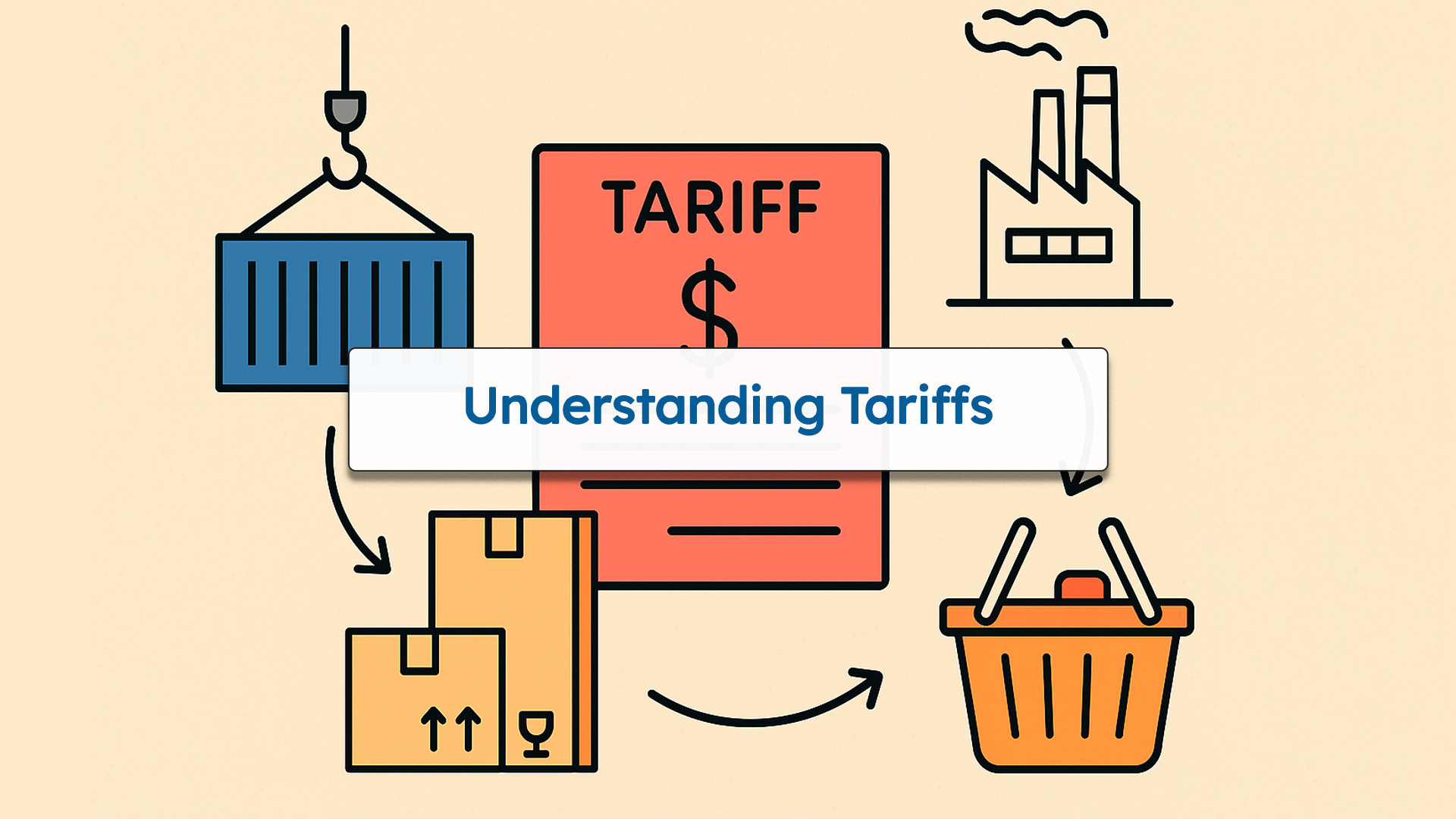When you hear the word tariff, your mind might jump to news headlines or political debates. But what exactly is a tariff, and how does it affect your wallet, your country, and the global economy?
What Is a Tariff?
A tariff is a tax that a government places on imported goods. In other words, it’s a fee that companies must pay when they bring products into a country from abroad.
The goal? To make imported goods more expensive and encourage people to buy domestic products instead.
How Do Trade Tariffs Work?
When a country imposes a trade tariff, it charges foreign suppliers a tax for selling their goods in the domestic market. For example, if the U.S. imposes a 25% tariff on imported washing machines, a foreign manufacturer must pay that tax before their products can enter the U.S. market. That extra cost typically gets passed on to consumers in the form of higher prices. The idea is to make imported goods less attractive, giving domestic producers a competitive edge. However, it can also strain international relationships and impact global supply chains.
Types of Tariffs
There are two main types of tariffs:
- Ad valorem tariffs – These are based on a percentage of the product’s value. For example, a 10% tariff on a $100 item would add $10 to its cost.
- Specific tariffs – These are a fixed fee based on quantity, such as $2 per pound of imported apples.
Why Do Governments Use Tariffs?
Tariffs can be used for several reasons:
- Protect local industries – By making foreign products more expensive, local businesses may have a better chance to compete.
- Raise revenue – Tariffs generate money for the government.
- Political leverage – Sometimes, tariffs are used in trade negotiations or as a response to another country’s actions.
How Tariffs Affect Prices
When a tariff is added, the cost of the imported good typically goes up. That cost is usually passed on to consumers—meaning you might end up paying more at the store for certain products, especially if they’re made overseas.
The Pros and Cons
Pros:
- Protects domestic jobs and industries
- Encourages local production
- Can be a bargaining tool in trade talks
Cons:
- Higher prices for consumers
- Potential retaliation from other countries (trade wars)
- Can hurt businesses that rely on imported parts or materials
A Real-World Example
Let’s say the U.S. places a tariff on imported steel from another country. U.S. steel becomes more competitive price-wise, which helps American steelmakers. But U.S. companies that buy steel to make cars or appliances now have to pay more, which could lead to higher prices for consumers or even job cuts if companies can’t afford the higher costs.
Conclusion
Tariffs are powerful tools that can shape trade, protect industries, and influence economies. But they also come with trade-offs. Whether they help or hurt depends on who you ask—and what’s at stake.


